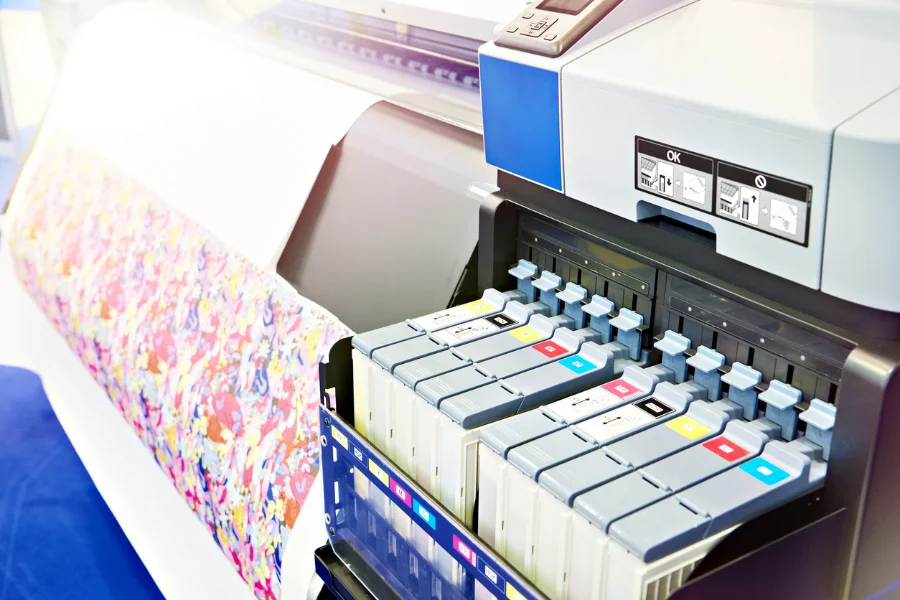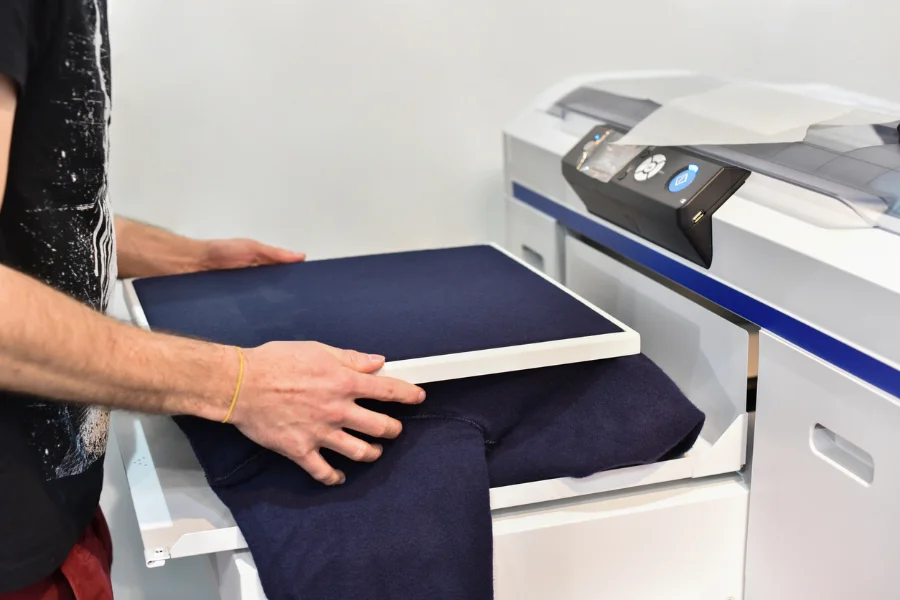DTF (direct-to-fabric) printing and sublimation printing are preferred ways of cloth printing through the application of heat, but they are different. The way patterns are printed on clothes is an approach not many people are aware of.
In this article, we will be looking at the differences between DTF printing and sublimation printing.
Table of Contents
What is DTF printing?
What is sublimation printing?
DTF vs. sublimation: key differences
Conclusion
What is DTF printing?
Direct-to-fabric (DTF) printing involves two-step digital printing using inkjet technology and heat to make prints on a variety of customized items.
In the first stage, using a four-color CMYK (cyan, magenta, yellow and key) overlay process, an inkjet printer prints the design onto a PET (polyethylene terephthalate) sheet. The design is then secured with an adhesive film and heated to cure the photo. A heat press then transfers the image to the surface of the product being printed.
This approach is primarily for small-scale printing and is ideal for working on cotton, polyester, and nylon material. The result of DTF printing is realistic photo-quality images that are color-rich and last a long time without fading. Businesses that want to promote their brands can use this printing procedure on t-shirts, hoodies, sweatshirts, and banners.
DTF pros
– It allows printing on all types of fabric.
– It is suitable for dark- and light-colored fabric.
DTF cons
– Colors are not as vibrant as in sublimation printing.
– Images are more rigid and may crack over time.
– It prints one item at a time.
What is sublimation printing?

This process of printing involves printing an image on a piece of special paper using a sublimation printer and then transferring the image to another material (usually polyester or polyester mix). The ink is then heated until it is absorbed by the fabric.
The result is a sharp image that will last for a long time and will not crack. Sublimation printing works well for large-scale needs. The type of fabric the print can go on includes nylon, acrylic, and polyester.
Sublimation pros
– It is suitable for hard surfaces like mugs and plates.
– Print runs are unlimited.
Sublimation cons
– Polyester is the only suitable fabric.
– It is unsuitable for dark-colored substrates.
DTF vs. sublimation: key differences
Print size

Among the major differences that separate the practicalities of DTF printing and sublimation printing is the print size. DTF printers have smaller platens as compared to sublimation printers. The platens are the surfaces that press the image designs on the substrate.
In DTF printing, the size of the platen is 12” X 15”. In contrast, sublimation printers have larger platens that measure 16” X 20”.
For an all-over print design on a fabric sublimation, printing is more suitable. Using a DTF printer to fully cover the cloth with print will require a lot of repasses, thus consuming a lot of time to finish the whole print.
Transfer process & print quality
Both DTF and sublimation use heat to transfer the design to the product. However, DTF uses an adhesive while sublimation bonds ink to fabric molecules.
In DTF printing, the image is transferred using transfer paper, whereas in sublimation printing, the solid is converted to gas immediately without passing through the liquid state. The difference in how the two printing techniques transfer the image into the product affects the quality of the print and its durability.
Compared to sublimation printing, DTF printing offers better print quality, since the ink is applied directly to the product. DTF also has a higher image resolution than sublimation printing, therefore you can see more detail in the print.
Nevertheless, sublimation printing uses an image transfer process that embeds the ink into the fabric. In the end, the fabric produces a subtle print but has longer-lasting colors and will not crack or peel over time.
This means that repeated washing and wearing will not lead to wear and tear or fading of the image print, but due to a lower resolution in the image produced by sublimation printing, finer details are lost in the fabric’s design.
Print texture
After heat application to transfer the print design on the substrate, the feel is different for sublimation printing and DTF printing. At the back of the lot stamping on the DTF transfer, there is hot glue melt. The fabric print will feel hard as though something has been attached to the shirt or banner.
For sublimation printing, the transfer reaches the product in a gas form upon heating from the solid state of the image. Therefore, upon touching the image print on the product, its texture will feel soft.
Suitable materials
DTF printing can be applied to products such as metal, wood, leather, plexiglass, plastic, copperplate paper, textile fabric, and others.
For sublimation printing, suitable substrates include metal, ceramics, aluminum, glass, fiberglass, plastic, and acrylic.
Quantity of products required
For large-scale garment printing, the best option is using sublimation printing. DTF printing suits small runs of print designs.
Businesses that have bulk orders can acquire sublimation printers. If they have a manageable demand, a DTF print serves the purpose.
Colors
A DTF printer works well for all types of colors whether light or dark. In contrast, the best fabric colors to print on a sublimation printer are light colors. But, sublimation will not work well with designs that have white within them as it cannot produce this color.
Conclusion
DTF printing and sublimation printing provide great alternatives to efficient fabric customization and branding. Depending on the needs of businesses or consumers, any of the two delivers good products. Therefore, this article provides all the crucial differences to assist businesses to choose their best option for printing products to sell.




